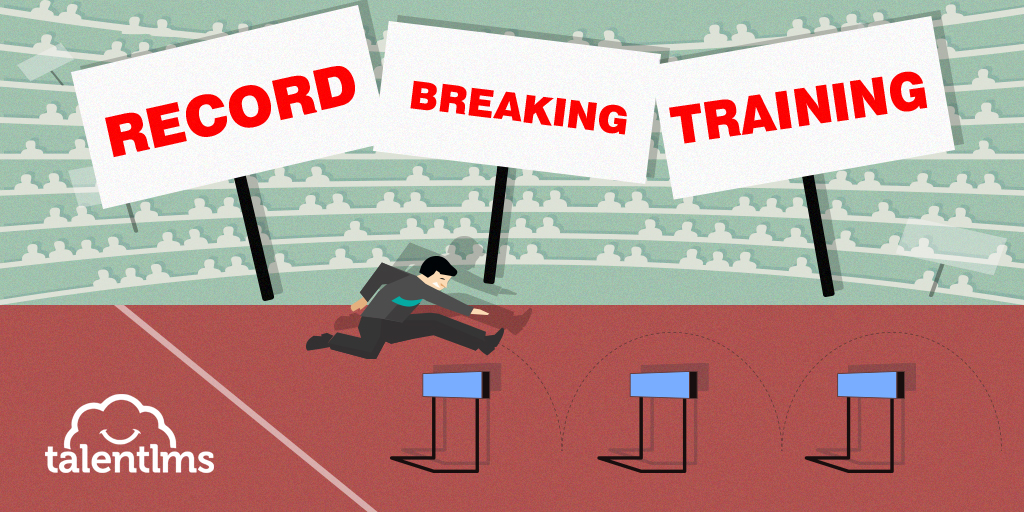Many companies experience a boost in business during the holiday season, and for some, that means hiring seasonal employees. Bringing on new workers and getting them up to speed quickly enough to meet the demands of a seasonal rush can be more tricky—and less of a treat.
Even though they’re only covering temporary needs, it’s important to train seasonal workers to ensure they get the results you want.
In this article, we’ll look at what makes training temporary workers challenging. We’ll also talk about why employee development is important and give you some best practices for successfully training temporary employees.
The challenges of training seasonal hires
Quality coaching is important for any employee’s success. But the urgent and short-term nature of seasonal employment poses some challenges to training.
Many companies focus their biggest efforts on how to hire seasonal employees, so training can be a bit of an afterthought. Or, they think of these workers as only temporary, so they don’t realize they need the same kind of training as any new employee.
Temporary hires may also have a hard time investing in training that doesn’t seem like it’ll be relevant once their time at the company is over. So, training needs to be relevant and meaningful.
Finally, because their timetable is short and you need these temps to hit the ground running, training needs to be quick and have a faster speed-to-competency.
Why you should train temporary employees
Investing in training may seem like a lot of work for employees who won’t be with you for more than a few months. But, there are three essential reasons why you should have a strategy for training temporary hires.
Prepare them to succeed
Seasonal and part-time employees are often the “face” of your company during a very busy time of the year. They may deal with high volumes of customers, and you want to ensure they have the right skills to do so effectively.
They also need to know your products and services inside out. Training is the best way to get them that information quickly and efficiently.
Help them provide the best customer experience
Customers expect excellent service at all times. They don’t know (or even care) whether an employee is only here for a limited time. Even during busy seasons, people expect consistency in the customer experience, so you need to make sure employees are well-informed on what that looks like.
Build your pool of returning workers
Seasonal employees are more likely to return to a company that supports them. Give them what they need to succeed and they’ll have a better employee experience. And that means that next time you have short-term needs, you’ll have an easier time finding and hiring staff.
8 tips for training seasonal employees
To overcome the challenges facing seasonal employee training and meet your objectives, you need a custom training strategy. Here are eight tips for making seasonal employee training successful.
1. Deliver ongoing training
Training seasonal employees shouldn’t be a one-time event. Often people are tempted to train part-time employees and temps in a single, all-hands presentation. They figure they can give some general info about the company and the products or services and get people working right away.
The instinct to minimize disruption is understandable. After all, people are there because you need extra help, and you need it now. However, all of your staff, even temporary employees will be more successful when you invest in their development.
Make it a process so they keep learning while on the job. Online employee training is a great solution because it can be ongoing and constantly accessible.
Train your temp staff at any time, from anywhere, with TalentLMS
The training platform that users consistently rank #1.
Easy to set up, easy to use, easy to customize.
2. Target specific product knowledge and soft skills
Most of your temporary staff may already possess the required skills to do the job (especially those that come from agencies). However, they still need to be trained on knowledge and processes that are specific to your business and their role.
This doesn’t mean your temp employees have to learn every aspect of how your business operates. Focus on job-related scenarios they are more likely to face and give them the product expertise and soft skills needed to address them.
For example, do they understand how a product works? Are there common customer pain points they’re going to run into? Teach them what they need to know to respond helpfully to the situations they’ll likely face.
3. Choose mobile-friendly training
Online training can be daunting for those new employees. Learning a new format and possibly new tech takes time and can pose a barrier. Make your training accessible with mobile-compatible content.
Besides, a Bring-Your-Own-Device (BYOD) policy allows you to deliver plug-and-play training. Most of your workers likely already use their smartphones to look up information and learn. Mobile-friendly training will ensure they’re comfortable getting into your training right away. A good mobile LMS can help you create, manage, and administer training quickly. And in a way that’s accessible to everyone.
4. Offer just-in-time content
Seasonal workers don’t have the luxury of deep learning over time. They need an overview of important content, and then they need a way to recall specific information the moment it’s relevant. Online training is a great way to get employees the information they need when they need it.
When you offer convenient, topic-specific online lessons, workers can log in and pull up just what they need when it matters. They’ll know where to turn if a customer has a question about the product or when they need a refresh about how to fill out a form.
5. Make it micro
Microlearning makes it easy to work around busy schedules. It offers short, bite-sized lessons that focus on one concept. And each lesson can be completed in just a few minutes. People are more likely to engage when they know it won’t take them away from important work.
Microlearning also helps people learn quickly. According to research, microlearning on mobile apps increases learning retention. The simple and focused nature of the lessons means people can give the content their undivided attention. And they’re more likely to recall the content when they learn one concept at a time.
Meet TalentLibrary™
A growing collection of ready-made courses and mini-lessons
that cover skills like sales, customer service, and retail essentials![]()

6. Create opportunities for peer-to-peer learning
Mentoring, shadowing, and observing are some of the best ways to learn job-related skills quickly and effectively. Nothing beats seeing, experiencing, and applying the skills in a real work scenario.
Consider pairing up seasonal employees with your more experienced, regular staff—establishing a buddy system. Paired employees can take turns serving customers. The temps can observe and shadow the veteran employees, or permanent employees can supervise temps and give valuable feedback and coaching.
7. Give employees hands-on experience
You can speed up the effectiveness of seasonal workers’ education by giving them hands-on experience with the skills they’ll need. Use things like simulations and role-playing activities during onboarding to let them practice the types of scenarios they’ll face at work.
These strategies prepare employees for real-world situations and give them a safe environment to practice and learn from their mistakes. Plus, practicing the skills builds muscle memory, making it more likely people will use the skills back on the job.
8. Boost learning with incentives
Seasonal employees are focused on the work as their top priority and training can sometimes be treated as an afterthought. Offering incentives can be a great way to motivate your seasonal staff to take the required courses on time.
You can inspire engagement by providing incentives for completing courses, acing assessments, or reaching learning milestones. These incentives don’t have to be monetary rewards. Exclusive discounts, gift vouchers, free items, and certificates of completion are all great incentives.

Invest in employee training for your seasonal workers
With everyone in your company expecting to do a lot of heavy lifting during the holidays or other busy seasons, it can be easy to overlook the training and development needs of temporary staff.
Training seasonal workers doesn’t have to be a chore. Prioritize your temporary workers and give them a positive start through proper training and onboarding.
Creating a great seasonal training strategy will positively affect your team’s performance, and your business will get to reap the benefits. Happier, more motivated employees—temporary or otherwise—equate to happier customers. And in today’s customer-driven business environment, that’s what really counts.
Originally published on: 20 Nov 2017 | Tags: Employee Training



